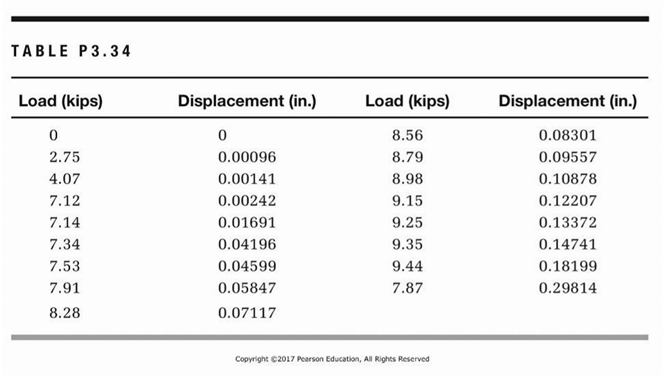A grade 36 round steel bar with a diameter of 0.5 inches and a gauge length of 2 inches was subjected to tension to rupture following ASTM E-8 test procedure. The load and deformation data were as shown in the following table: Using a spreadsheet program obtain the following: a. A plot of the stress-strain relationship. Label the axes and show units. b. A plot of the linear portion of the stress-strain relationship. Determine modulus of elasticity using the best fit approach. c. Proportional limit.
A grade 36 round steel bar with a diameter of 0.5 inches and a gauge length of 2 inches was
subjected to tension to rupture following ASTM E-8 test procedure. The load and deformation data were
as shown in the following table:
Using a spreadsheet program obtain the following:
a. A plot of the stress-strain relationship. Label the axes and show units.
b. A plot of the linear portion of the stress-strain relationship. Determine modulus of elasticity using
the best fit approach.
c. Proportional limit.
d. Yield stress.
e. Ultimate strength.
f. When the applied load was 4.07 kips, the diameter was measured as 0.499905 inches. Determine
Poisson’s ratio.
g. After the rod was broken, the two parts were put back together and the diameter of at the neck
was measured as 0.416012 inches. What is the true stress value at fracture? Is the true stress at
fracture larger or smaller than the engineering stress at fracture? Why?
h. Do you expect the true strain at fracture to be larger or smaller than the engineering strain at
fracture? Why?

Trending now
This is a popular solution!
Step by step
Solved in 4 steps with 3 images









